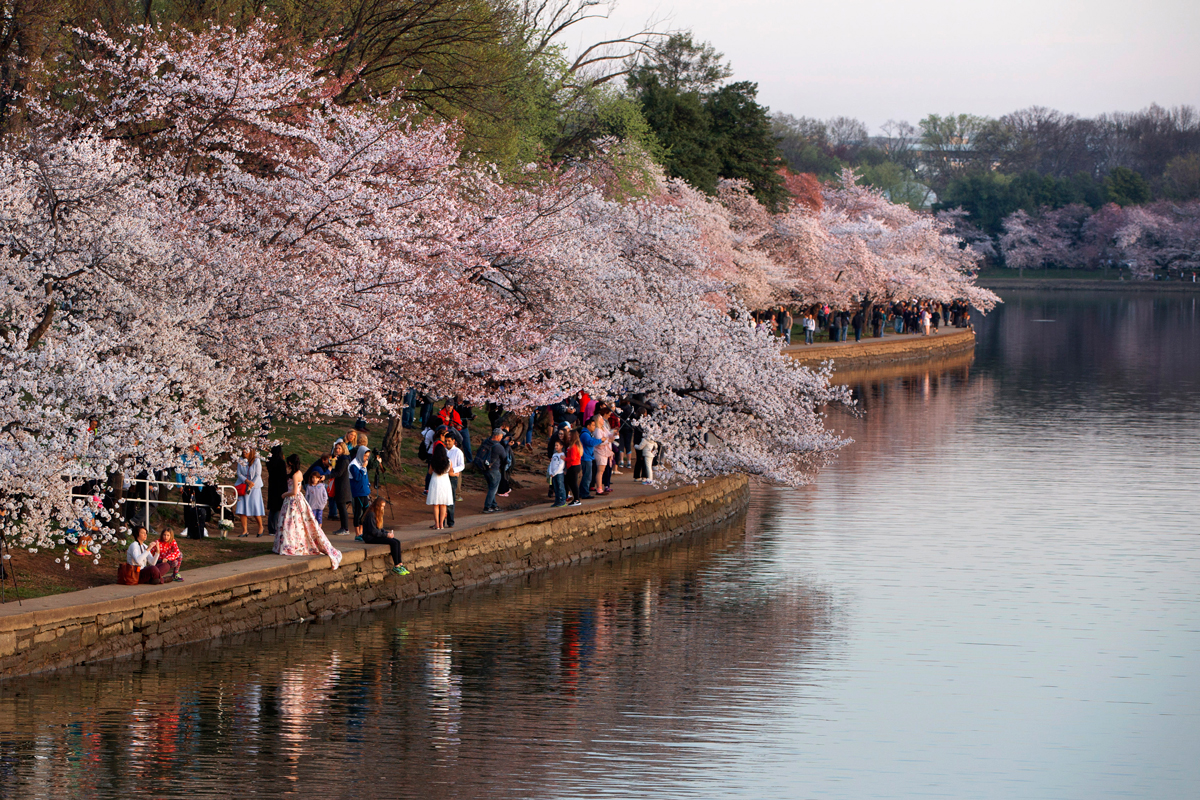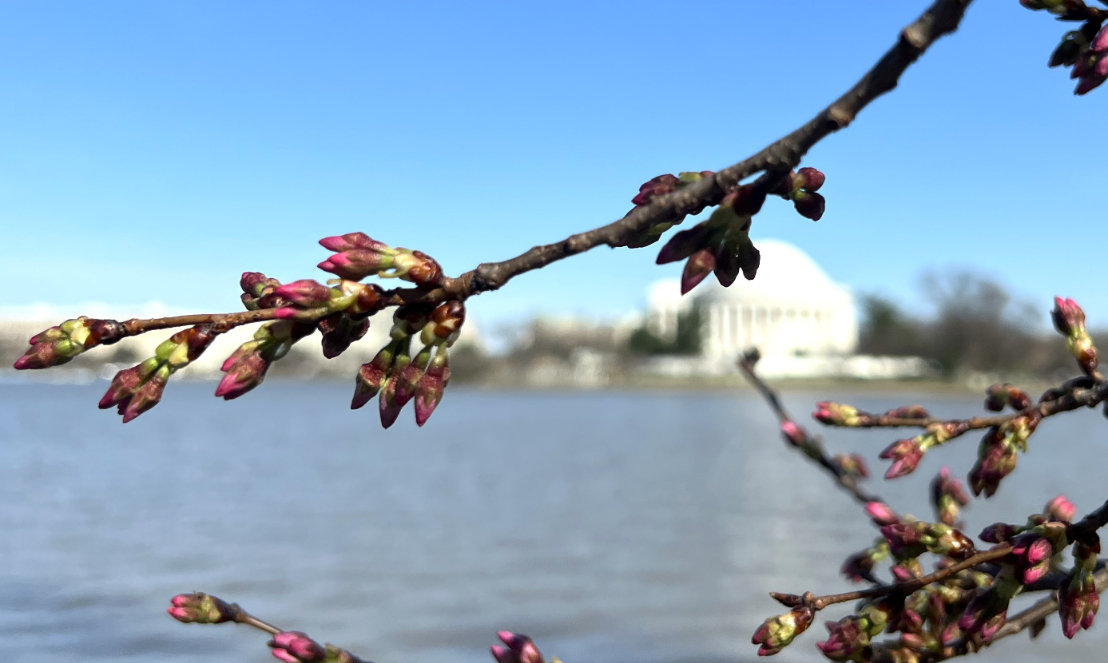The changing climate is impacting when D.C.’s famous cherry trees reach peak bloom.
This year's May-like temps in March are quickly pushing the Tidal Basin trees towards peak bloom. The trees reached the first phase of their blooming cycle on the first weekend of March.
The cherry blossoms go through six phases on the way to peak bloom or when 70% of the Yoshino blossoms are flowering. Storm Team4’s predicts the trees will reach peak bloom between March 21 and 26. Last year, peak bloom was March 23.
The National Park Service is already working to address rising water and flooding. They recently announced that 159 cherry trees on the Tidal Basin and West Potomac Park will be cut down for seawall repairs.
Here’s more on how climate change will impact peak bloom in the future:
Is the changing climate impacting peak bloom?
Yes, the changing climate is making D.C.'s cherry blossoms reach peak bloom earlier.
When did the cherry blossoms used to reach peak bloom?
From 1931 to 1960, the average peak bloom was around April 6. From 1981 to 2010, the average peak bloom was five days sooner around April 1.
How does the changing climate impact peak bloom?
Storm Team4 looked at peak bloom dates over the last twenty years to reveal recent trends. According to historical data, peak bloom favors the last week of March. It fell on this date eight of the 20 years.
Peak bloom has occurred even earlier in the third week of March in four of the last twenty years.
How often has peak bloom been in April?
In the last 20 years, several peak blooms have occurred in April. The cherry blossoms reached peak bloom in the first week of April four times and the second week of April four times.
With the area warming, when will peak bloom occur in the future?
Climate Central projects that by 2070 peak bloom could be as early as the first week of March.



